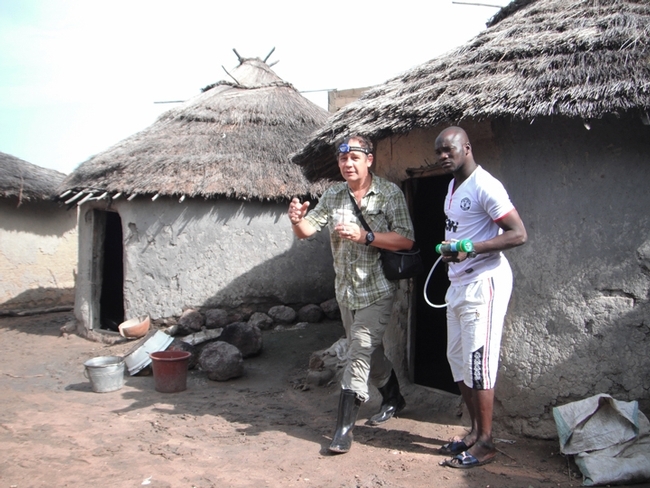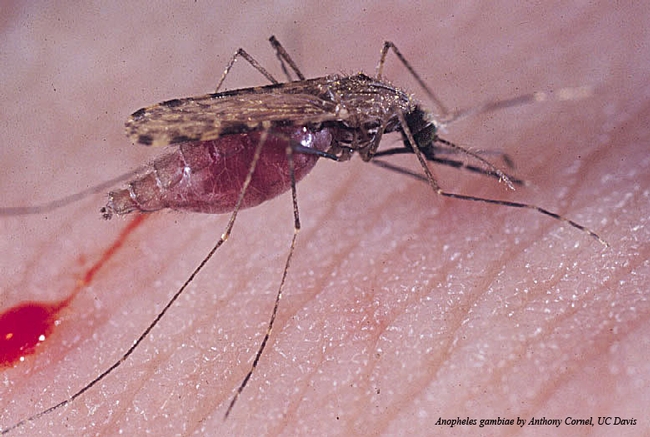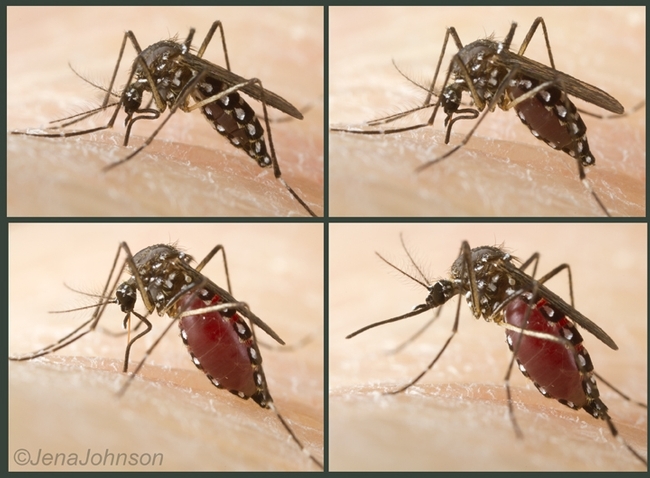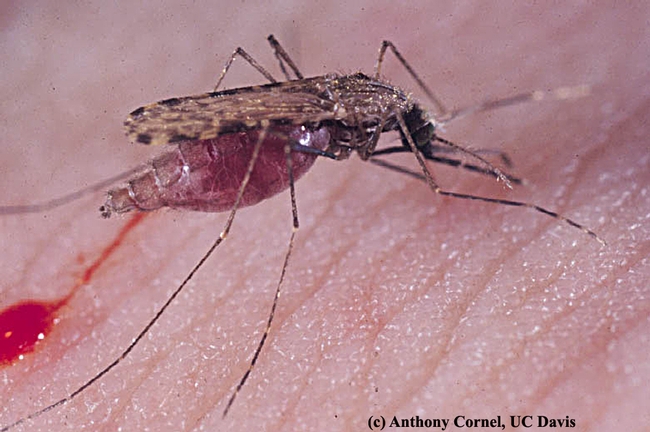Posts Tagged: Shirley Luckhart
Mosquitoes: Out for Blood
It's good to see UC Davis mosquito researchers featured in the KQED's science program, "Deep Look." KQED journalists recently traveled to the UC Davis campus to visit several mosquito labs. The end result: The KQED news article on “How...

Culex quinquefasciatus, also known as the southern house mosquito, with a gut full of blood. Infected Culex mosquitoes can transmit the West Nile virus. (Photo by Kathy Keatley Garvey)
Malaria Observation Day at UC Davis on April 25
With all the news media coverage lately on the Zika virus, the more pressing disease of malaria may seem overshadowed. It shouldn't be, nor is it, at the University of California, Davis. Medical entomologists and other scientists at UC Davis are...

UC Davis medical entomologist Anthony Cornel with a villager in Mali.

UC Davis World Malaria Day will take place Monday, April 25 in the Memorial Union. At the top left is UC Davis medical entomologist Anthony Cornel.
The Most Dangerous Animal on the Planet
What's the most dangerous animal on the planet? No, not rhinos, cape buffaloes, hippos, lions, elephants, crocodiles or sharks. It's an insect, the blood-sucking mosquito. Mosquitoes that transmit malaria, including Anopheles gambiae, kill more...

Malaria mosquito, Anopheles gambiae, by medical entomologist Anthony Cornel, UC Davis
Mosquitoes Take the Spotlight: Front Line and Center
Mosquitoes will take the spotlight, front line and center, this month. On Wednesday, April 8, Regents Professor Michael Strand of the University of Georgia, Athens, and internationally recognized for his research on parasite-insect host interactions,...

Aedes aegypti feeding on its host. (Photo by Jena Johnson)
Targeting Malaria at a Bay Area Symposium
Mark your calendar. If you want to learn about malaria and the exciting new research underway, be sure to set aside Friday, April 24. It's the fourth annual Bay Area World Malaria Day Symposium, co-hosted by the University of California, Davis, and...

The malaria mosquito, Anopheles gambiae. (Photo by Anthony Cornel)

